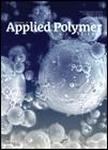版权所有:内蒙古大学图书馆 技术提供:维普资讯• 智图
内蒙古自治区呼和浩特市赛罕区大学西街235号 邮编: 010021

作者机构:Polymer Physics Laboratory Institute of Chemistry Academia Sinica Beijing 100080 China Department of Materials Science Chinese University of Science and Technology Hefei 230026 China Department of Polymer Science and Engineering Pusan National University Pusan 609‐735 Korea
出 版 物:《Journal of Applied Polymer Science》
年 卷 期:1998年第64卷第8期
学科分类:081704[工学-应用化学] 07[理学] 08[工学] 0817[工学-化学工程与技术] 070303[理学-有机化学] 0703[理学-化学]
主 题:segmented polyurethanes shape memory effect
摘 要:The shape memory behavior of a series of polycaprolactone/methane diisocyanate/butanediol (PCL/MDI/BDO) segmented polyurethanes of different composition was studied. The molecular weight of PCL diols was in the range of 1600–7000, and the hard segment content varied from 7.8 to 27% by weight. Film specimens for shape memory measurements were prepared by drawing at temperatures above the melting temperature of the soft segment crystals and subsequent quick cooling to room temperature under constrained conditions. The shape memory process was observed and recorded in a heating process. Parameters describing the recovery temperature, ability, and speed were used to study the influence of structure and processing conditions on the shape memory behavior of the sample. It was found that the high crystallinity of the soft segment regions at room temperature and the formation of stable hard segment domains acting as physical crosslinks in the temperature range above the melting temperature of the soft segment crystals are the two necessary conditions for a segmented copolymer with shape memory behavior. The response temperature of shape memory is dependent on the melting temperature of the soft segment crystals. The final recovery rate and the recovery speed are mainly related to the stability of the hard segment domains under stretching and are dependent on the hard segment content of the copolymers. © 1997 John Wiley & Sons, Inc. J Appl Polym Sci 64: 1511–1516, 1997